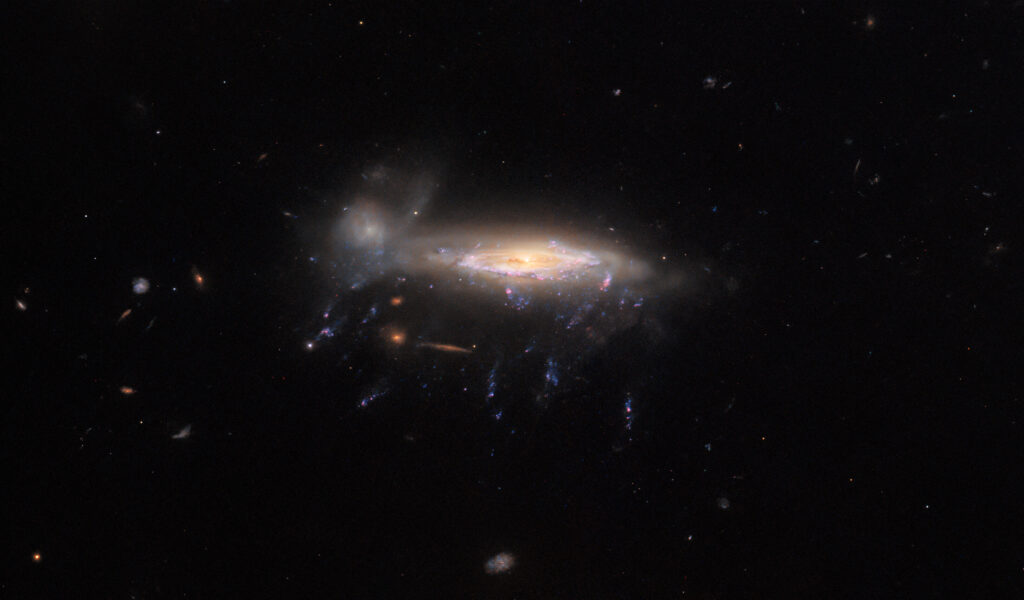The Hubble mission support group has published a new image of a deep space object. This time the telescope photographed the galaxy JO204.

The galaxy photographed by the Hubble telescope is located at a distance of approximately 600 million light-years from the Milky Way in the direction of the constellation Sextans. It has a spiral structure. Despite the fact that we can see JO204 almost from the edge, Hubble’s photo makes it possible to see its bright central core and spiral arms.
JO204 is very similar to the galaxies JW100 and JO201, pictures of which have also recently been published by the Hubble mission support team. All these objects are united by the presence of extended tails consisting of dust, gas and newborn stars. Due to their resemblance to tentacles, astronomers sometimes call such objects “jellyfish galaxies”.
Such structures are formed as a result of a process known as separation under pressure. It occurs when galaxies collide with diffuse gas clouds located in intergalactic space. They act as a headwind, carrying away gas and dust from these galaxies, which leads to the formation of characteristic plumes like those that adorn JO204, JW100 and JO201. Over time, the matter in them cools and condenses, which leads to the formation of new star systems.
The image of JO204 was obtained during a project aimed at studying six “jellyfish galaxies” closest to Earth. Astronomers hope that Hubble’s images will help them better understand the mechanism of their origin and the processes of star formation going on inside them.
According to https://esahubble.org
Follow us on Twitter to get the most interesting space news in time
https://twitter.com/ust_magazine

